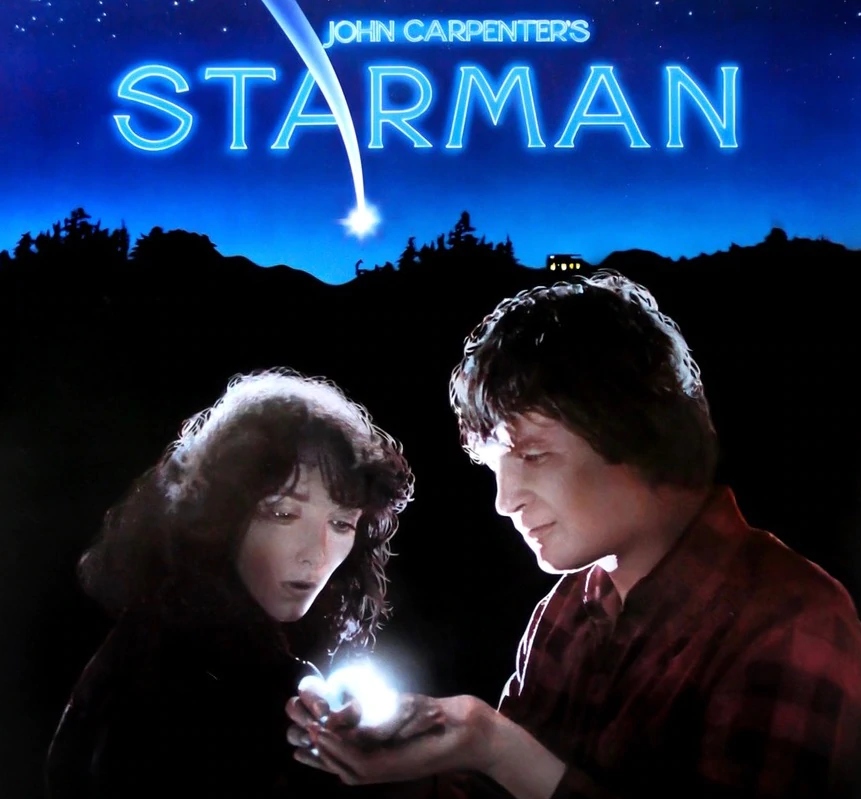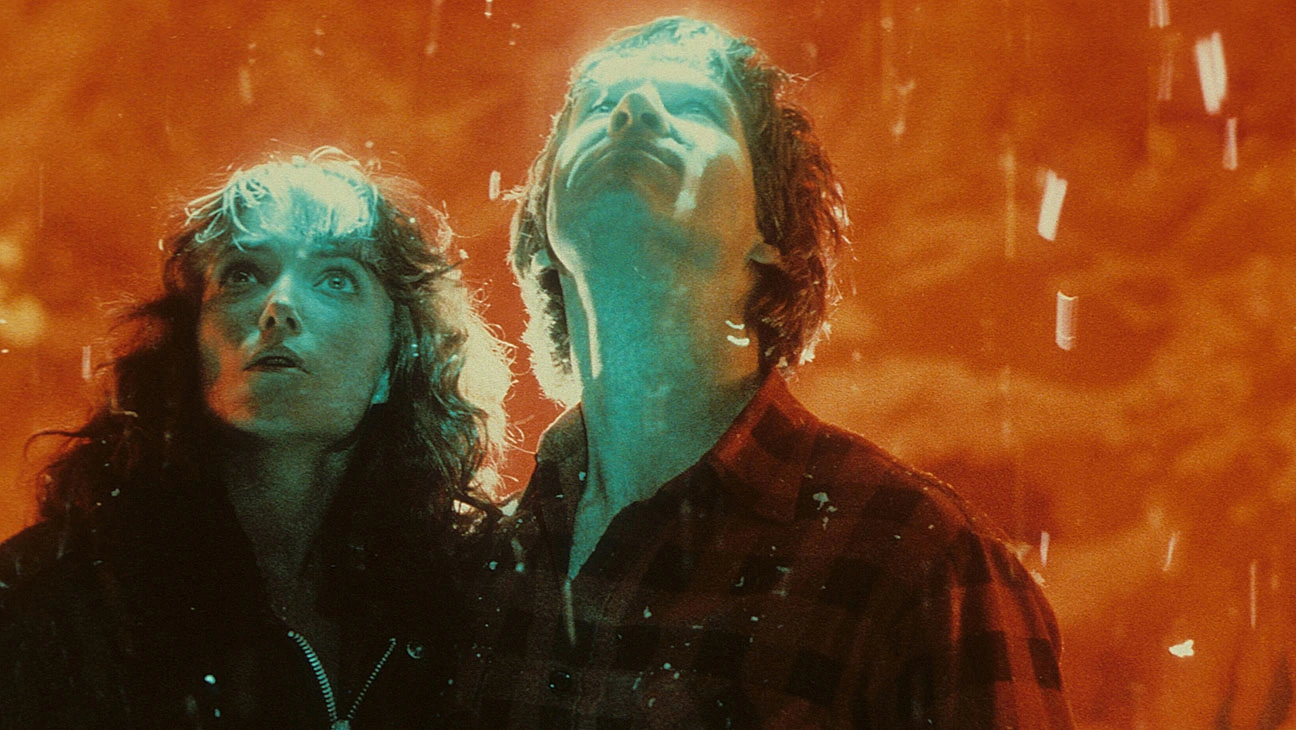Starman is a film that combines science fiction, road movies, and romance into a fascinating and entertaining whole. Carpenter foregoes action and horror in favor of a lackluster science fiction romance. Alien Bridges arrives on Earth on what he considers to be a simple friendship mission. Of course, he is erroneous, as all of the pesky earthlings are ugly, brutish, and hostile.
Except for Karen Allen, a widowed, childless woman who is kidnapped by Bridges, falls in love with him and saves him. Carpenter’s signature drive, intensity, and surprise are not present in this film. In the first five minutes, the dazzling effects are at their peak.
There are not many typical romantic comedies that John Carpenter has made. Halloween, Escape From New York, and his Apocalypse trilogy are not exactly known for making couples fall in love. Nonetheless, in 1984’s Starman, starring an Oscar-nominated Jeff Bridges and an equally amazing Karen Allen as an odd couple on a cross-country road trip, he constructed a doozy of a romance.
Despite the fact that it was released after E.T., I believe it is superior to Spielberg’s overly emotional film. The plot is delicate, and the development of a crucial relationship is slow, allowing the viewer to get to know the characters and accurately portray them. Allen and Bridges’ romance is kept understated throughout, and even the romantic moments are handled with care.
He Has Traveled from A Galaxy Far Beyond Our Own – Starman (1984)

Starman has a lengthy and illustrious history. The script was developed at Columbia in 1980, and it went through a round-robin of authors.
The film is about an alien who responds to mankind’s invitation to extraterrestrial life, beginning with the 1977 launch of the Voyager 2 space probe, which carries a golden record full of samples of Earth culture and greetings in 57 different languages. Following the crash of its ship in Wisconsin, the “Starman” arrives at a nearby residence and clones itself a body. The DNA belongs to the late Scott Hayden.
The house belongs to his heartbroken widow, Jenny, unbeknownst to the visitor. Jenny, terrified and perplexed at the prospect of seeing the love of her life again, reluctantly embarks on a cross-country journey to “Scott’s” rendezvous in Winslow, Arizona. It wouldn’t be astonishing if Starman outperformed its sci-fi Christmas rival by a factor of ten. An entertaining and attractive premise and Jeff Bridges’ excellent performance as a friendly alien offer it significant box-office potential. Starman appears to be expanding beyond its initial sci-fi audience, merging sci-fi with an on-the-road action romance. Instead of being welcomed by its human hosts, the U.S. government shut down the spaceship.
The ship crashes in Chequamegon Bay, Wisconsin, and the extraterrestrial rises from the debris as a blue ball of energy. It comes upon Jenny Hayden’s house, which has lately been widowed (Karen Allen). It discovers a strand of hair belonging to Jenny’s late husband Scott in a picture book and uses it to clone a new body. Jenny, sad, is surprised when the alien assumes Scott’s form.
The Starman (Jeff Bridges) holds seven tiny silver spheres that he transforms into pure energy to do wondrous deeds. He uses the first to inform his people that his vessel has been damaged, that the atmosphere is dangerous, and that he will meet them in three days at “Landing Area One,” situated in Arizona. He then uses the second to build a holographic map of the United States to persuade Jenny to assist him in getting to Arizona. On the other hand, Jenny is terrified of the Starman and reacts hostilely to him, trying everything she can to avoid going with him.
She ultimately begs the Starman to shoot her with her pistol after attempting to flee several times in vain. Instead, the Starman pulls out the pistol’s magazine and assures her that he has no intention of harming her. As they continue on their voyage, the Starman, who has a rudimentary comprehension of English syntax, learns to precisely express who he is and his goal to Jenny.
At the same time, Jenny tries to show the Starman that mankind is not wholly savage. This is a film from the 1980s. Because this is a John Carpenter film from the 1980s, what does he have the astute U.S. government do when it discovers the UFO? They, of course, believe it’s a Russian threat and blast it out of the sky. The craft crashes in Wisconsin, and an extraterrestrial in the shape of a blue floating ball emerges from the wreckage. It comes across Jenny Hayden, a heartbroken widow portrayed by Karen Allen, who is now three years distant from Raiders of the Lost Ark.
The Starman informs Jenny that he has three days to get to the rendezvous spot, Arizona’s Barringer Crater, or he would perish. She teaches him how to drive a car and use credit cards to prepare him to continue the voyage independently. While they are stopped at a bit of dinner, they connect on a deeper emotional level, with Jenny attempting to explain what love is to him.
She also sees the Starman resurrect a dead deer tethered to the front of a hunter’s (Ted White) automobile. She resolves to assist him after being deeply affected. Starman makes subtle and often amusing jabs at popular culture throughout his cross-country journey. Bridges is, in reality, the epitome of that storyteller’s famous character. This “Man-from-Mars” type looks at our cultural customs with an innocent and inquiring eye. Everyday habits ranging from eating dessert to shooting deer are brought up by this intense, inquisitive interest.
In a nutshell, Starman is a frequently spot-on examination of contemporary American culture. Allen has always been an entirely natural actor, free of pretense. Jeff Bridges plays the alien-in-a-man’s-body as goofy and mannered as the alien-in-a-man’s-body opposite her in an Oscar-nominated performance; there’s something weirdly emotional about his part in this picture, and he quickly had me entirely invested in his character.
Jenny never regains consciousness, but Starman uses one of his final two spheres to resurrect her, lovingly caressing her while her wounds heal. He then abandons her and seeks to approach the Crater on his own, fearful that she will be harmed again. Jenny regains consciousness and sets out to locate him, knowing they are being hunted by the authorities. Meanwhile, the Starman snags a ride with a local truck driver, telling him his name is Scott and that he’s on his way to Arizona. They will be stuck in traffic for quite some time.
Jenny manages to get a ride with another truck diver many miles back. After a time, they are greeted with the same traffic congestion. The police have closed the road and are questioning individuals. They get close and complete their emotions for one another on the way.
Despite Jenny’s claim that she is infertile, Starman informs her that he has given her a child. Starman assures her that she should accept what he says and tells her that the child will be her husband’s son since he is a clone of Scott. He emphasizes that the youngster will know all Starman knows and become a teacher one day. He does, however, give her the option of returning it, but Jenny declines, joyously embracing his present. It would be interesting to know how Starman’s mission would have gone if he hadn’t been shot down. He was apparently intending on staying for a few days anyhow.
The alien-among-us assumption is frequently used to make a point about ordinary behavior. Here, the extraterrestrial is perplexed as to why people shoot deer and utilizes his talents to resurrect the animal. How can you not support someone who selflessly gives innocent creatures new life? The film has several fewer effective parts. Jenny can talk about apparently essential topics like love and beauty because the alien is conveniently unfamiliar with such English words. And it’s a gloomy film aesthetically; actions take place in darkness, and it’s frequently unclear what’s going on.
Several plot-advancing instances stretch plausibilities, such as when a person puts a bomb to distract the cops despite not knowing Jenny or the extraterrestrial. The film’s finest asset, though, is the ever-versatile Bridges, who is at his most relaxed as the benign extraterrestrial. He lends an exquisite sense of childlike delight to the character. Allen, as well as Charles Martin Smith, who plays a GS-11 public servant working to rescue Bridges, deserve kudos for their sensitive portrayals. Give filmmaker John Carpenter credit for his seamless storytelling as well.
Jenny is alone in the Crater at the end of the film, holding an extraterrestrial artifact in one hand and an electric bun in the other. Near the end of the voyage, the Starman and Jenny are accosted in a cafe in Winslow by Mark Sherman, interviewing the dying Starman.
The Starman reveals that his people had previously visited Earth and are fascinated by humanity because humans are at their greatest when things are at their worst. When confronted with this, Shermin resolves to jeopardize his profession to assist the Starman and Jenny in escaping. As Army helicopters swarm them, the pair arrives near the Crater. The aliens’ massive, spherical mothership arrives in the sky and dives into the Crater all of a sudden. The film concludes on a highly upbeat note, leaving the spectator overcome with powerful feelings of love, terror, and grief.
Why Should You Watch Starman (1984)?

Starman has the potential to be a pretty unusual film. Still, the two performers care so much about their characters that the film billed as space fiction turns out to be one of 1984’s most moving love tales. Meanwhile, Carpenter delivers many traditional scenarios from previous road movies, such as a stop at a roadside cafe where the alien’s erratic conduct draws attention.
And there’s a scene in Vegas when the alien tries to outwit the slot machines. The chase dynamics add tension to the mix, as do some gorgeous moments, one of which had animal lovers all across the world punching the air with exuberant pleasure. The idea is, of course, shallow, and stealing portions from E.T. Close Encounters did the picture no favors in terms of critical acclaim. Still, the emotional punch is massive, with the primary characters being so easy to cheer for. While Jack Nitzsche’s synth-based musical soundtrack is suitable for a sci-fi film.
Starman functions on a few distinct levels. As a science-fiction story, it investigates, sometimes humorously, what an alien may view of Earth. The guy continually observes what other people do and assimilates such habits into his attempts to become human. The romantic element is much more appealing. The principal actors do admirably. Bridges give Starman odd tiny peculiarities – twitches, quirky looks – that may come off as stupid in the wrong hands but work perfectly in his. He creates the character just off-kilter enough to be plausible within the narrative context.
Meanwhile, Allen provides the film’s emotional center. One can sympathize with Jenny’s suffering since she convincingly portrays the character’s maelstrom of emotions. Starman’s tale is an excellent combination of genre elements that extends beyond science fiction. It’s also a romance and a road movie. Simultaneously, filmmaker John Carpenter delivered the plot at a measured pace, giving spectators plenty of time to appreciate what’s been going on and a reasonable number of spectacles that showcase Starman’s miracles.
Starman is unquestionably one of the finest genre films of the 1980s, as well as one of Carpenter’s best. Starman is a charming, poetic film that has aged admirably. Carpenter’s most humane work is the antithesis of the invasion anxiety.
